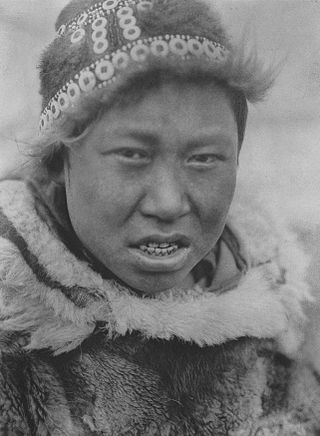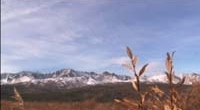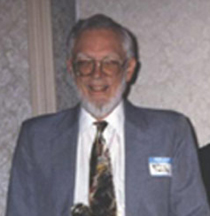
The Yupik are a group of Indigenous or Aboriginal peoples of western, southwestern, and southcentral Alaska and the Russian Far East. They are related to the Inuit and Iñupiat. Yupik peoples include the following:

Tanacross is an endangered Athabaskan language spoken by fewer than 60 people in eastern Interior Alaska.

Athabaskan is a large family of Indigenous languages of North America, located in western North America in three areal language groups: Northern, Pacific Coast and Southern. Kari and Potter (2010:10) place the total territory of the 53 Athabaskan languages at 4,022,000 square kilometres (1,553,000 sq mi).
More than 100 complete translations into English languages have been produced. Translations of Biblical books, especially passages read in the Liturgy can be traced back to the late 7th century, including translations into Old and Middle English.
Peter Kalifornsky was a writer and ethnographer of the Dena'ina Athabaskan of Kenai, Alaska.

The Gwichʼin language belongs to the Athabaskan language family and is spoken by the Gwich'in First Nation (Canada) / Alaska Native People. It is also known in older or dialect-specific publications as Kutchin, Takudh, Tukudh, or Loucheux. Gwich'in is spoken primarily in the towns of Inuvik, Aklavik, Fort McPherson, and Tsiigehtchic, all in the Northwest Territories and Old Crow in Yukon of Canada. In Alaska of the United States, Gwichʼin is spoken in Beaver, Circle, Fort Yukon, Chalkyitsik, Birch Creek, Arctic Village, Eagle, and Venetie.

Michael E. Krauss was an American linguist, professor emeritus, founder and long-time head of the Alaska Native Language Center. The Alaska Native Language Archive is named after him.

Numic is the northernmost branch of the Uto-Aztecan language family. It includes seven languages spoken by Native American peoples traditionally living in the Great Basin, Colorado River basin, Snake River basin, and southern Great Plains. The word Numic comes from the cognate word in all Numic languages for “person”, which reconstructs to Proto-Numic as. For example, in the three Central Numic languages and the two Western Numic languages it is. In Kawaiisu it is and in Colorado River, and.

The Tsimshianic languages are a family of languages spoken in northwestern British Columbia and in Southeast Alaska on Annette Island and Ketchikan. All Tsimshianic languages are endangered, some with only around 400 speakers. Only around 2,170 people of the ethnic Tsimshian population in Canada still speak a Tsimshian language; about 50 of the 1,300 Tsimshian people living in Alaska still speak Coast Tsimshian. Tsimshianic languages are considered by most linguists to be an independent language family, with four main languages: Coast Tsimshian, Southern Tsimshian, Nisg̱a’a, and Gitksan.

Comanche is a Uto-Aztecan language spoken by the Comanche, who split from the Shoshone soon after the Comanche had acquired horses around 1705. The Comanche language and the Shoshoni language are quite similar, but certain consonant changes in Comanche have inhibited mutual intelligibility.
Vida Chenoweth was a solo classical marimbist, an ethnomusicologist, and a linguist.
Alan S. Boraas is a professor of anthropology at Kenai Peninsula College in Alaska. He is known for his research into the culture, history, and archaeology of the peoples of the Cook Inlet area of Alaska, and in particular has worked closely with the Dena'ina people of the Kenai Peninsula. He is an adopted honorary member of the Kenaitze Indian Tribe, and is helping the tribe develop a program to teach the Dena'ina language.
Holikachuk is a recently extinct Athabaskan language formerly spoken at the village of Holikachuk on the Innoko River in central Alaska. In 1962, residents of Holikachuk relocated to Grayling on the lower Yukon River. Holikachuk is intermediate between the Deg Xinag and Koyukon languages, linguistically closer to Koyukon but socially much closer to Deg Xinag, which has influenced it. Though it was recognized by scholars as a distinct language as early as the 1840s, it was only definitively identified in the 1970s. Of about 180 Holikachuk people, only about 5 spoke the language in 2007. In March 2012, the last living fluent speaker of Holikachuk died in Alaska.
Kashinawa, or Hantxa Kuin, is an indigenous American language of western South America which belongs to the Panoan language family. It is spoken by about 1,600 Kaxinawá in Peru, along the Curanja and the Purus Rivers, and in Brazil by 400 Kaxinawá in the state of Acre.
James Kari is an American linguist and Professor Emeritus with the Alaska Native Language Center at the University of Alaska Fairbanks (UAF) specializing in the Dene of Alaska. He served on the faculty of UAF from 1973 to his retirement in 1997.
The North American Indian Women's Association (NAIWA) is a non-profit educational and service association, which seeks to promote intertribal communications, betterment of home, family life and community, betterment of health and education, awareness of Indian cultures, and fellowship among North American Indian people. NAIWA was founded in the summer of 1970 and was the first national Native American women's group. Marie Cox (Comanche), from Midwest City, Oklahoma, served as founding president at the inaugural meeting, which was held in Fort Collins, Colorado. During the 1970s adoption reform was one of its greatest concerns. Cox's presidency was followed by Agnes Dill of the Isleta Pueblo in New Mexico in 1973, who was in turn succeeded by Mary Jane Fate from Fairbanks, Alaska, in 1975. Only women from federally recognized Indian tribes can be members.
Uto-Aztecan languages are divided into two groups, Northern and Southern Uto-Aztecan languages. They are spoken in the southwestern United States, north and central Mexico, and in Central America.

William Allen Smalley was an American linguist. He is best known for his role in the development of the Romanized Popular Alphabet for the Hmong language.
Irene Reed, was an American anthropologist, linguist and educator, central in preserving and promoting the Yup'ik language in Alaska.









